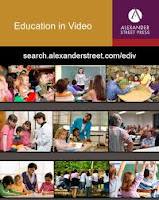I know you are probably as sick of this topic as I am, but as I was catching up on my professional reading today I came across a review for the site
GovTrack.us. Although not specifically designed for teachers it could certainly infuse some energy and excitement into a social studies classroom. The site tracks U. S. federal legislation, voting records, congressional district maps, and more. It also provides access to historical information on the workings of Congress. It was created in 2004 by Joshua Tauberer originally as a hobby but has grown into a full fledge 'open government' project. It is not affiliated with the government and is supported through crowdfunding and some advertising. The site is a gold mine for teachers in the social sciences. For those teachers who are tech savvy, there are data sets and GIS maps that can be downloaded and manipulated.
Although not specifically about the current election cycle, looking at the site got me wondering what other sites are available for integration into the curriculum by teachers. So I did a little poking around as librarians like to do, and found the sites listed below could support lessons related to government and specifically the current election cycle. Most would be useful in middle and/or high school classrooms but there are a couple for the elementary level as well.
Congress.gov -
https://www.congress.gov/
This is the official government site. It's pretty dry, but there are a number of good videos hidden in the site discussing various aspects of how the government works, including the election process.
Kids.gov -
https://kids.usa.gov/
Geared for student K-8 this covers all aspects of the government not just congress. It has specific resources for teachers.
Kids Voting (USA) -
https://www.kidsvotingusa.org/
This group was created in 1988 and basically helps teachers and schools conduct voting simulations in the classroom. It is geared more towards elementary and middle school students and includes resources for teachers. The North Carolina affiliate is
Kids Voting NC -
http://www.kidsvotingnc.org/
The following links are more appropriate for high school students:
ProCon 2016 Presidential Election -
http://2016election.procon.org/
Their mission reads as follows - "Promoting critical thinking, education, and informed citizenship by presenting controversial issues in a straightforward, nonpartisan, and primarily pro-con format.” They present both sides of an issue plus addition research. They have a great Teacher's Corner.
FactCheck.org -
http://www.factcheck.org/
Smart Vote -
http://votesmart.org/
Both of these sites are similar to ProCon in they discuss issues being debated by those running for office.
PBS Election Central: Education Guide
http://www.pbslearningmedia.org/collection/election-central-2016/
This site includes background information about elections as well as lesson plans for teachers.
PBS NewsHour Extra: News for Students & Teacher Resources 7-12
http://www.pbs.org/newshour/extra/tag/election-2016/
A news site created for students and teachers includes videos, articles, lesson plans, and more.
Citizens, Not Spectators -
http://www.civiced.org/resources/curriculum/voting
A Center for Civic Education program provides engaging voter education for students in grades 4-12.
Election assistance commission -
http://www.eac.gov/default.aspx
This site provides a different prespective on the election process. It discusses issues faced by election officials. It's a behind the scenes look at the process.
Gilder Lehman Institute of American History
https://www.gilderlehrman.org/history-by-era/topics/government-and-civics/teaching-resources
Teaching resources for Government and Civics classes.
Although I focused on integrating these resources into the curriculum, many of the sites are also tools for us to become more a more informed electorate. So take a look a the sites for your own edification and pass the information to your students and teaching colleagues.









